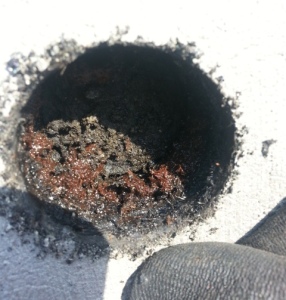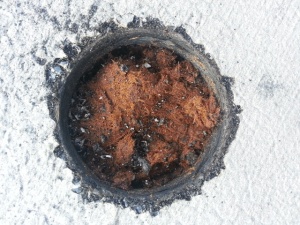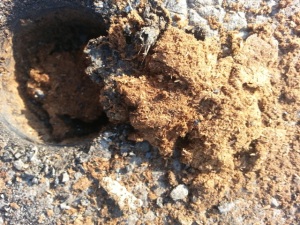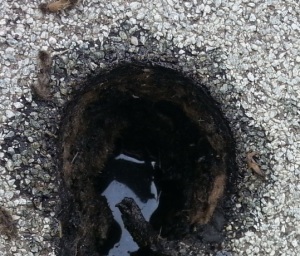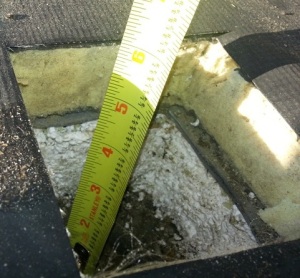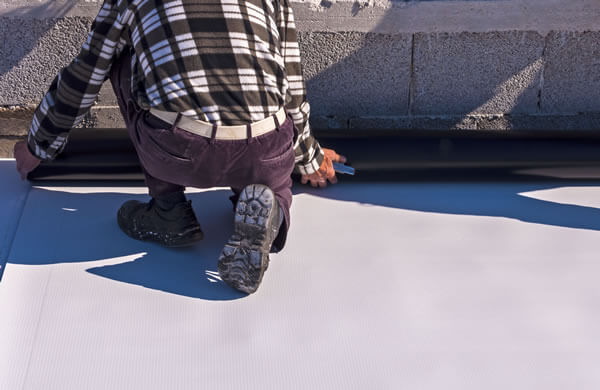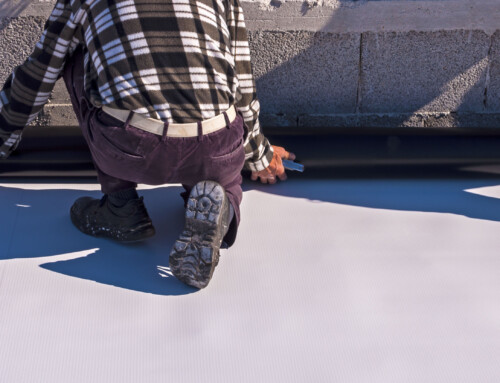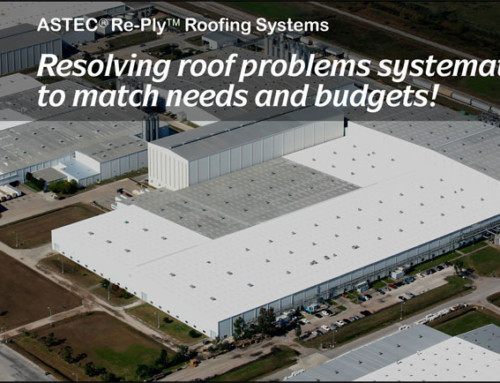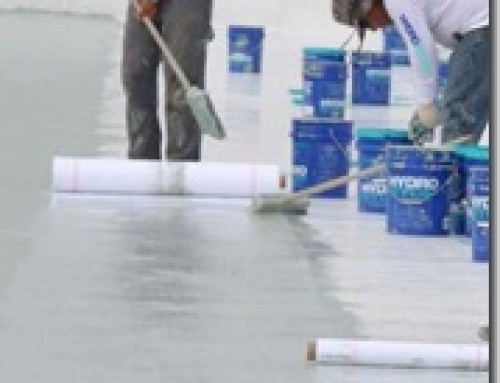Flat Roof
Whether a partial or full tear-off of a flat roof is needed is straight-forward, or at least it should be. After all, the most common reason a flat roof tear-off is needed is to remove any part of the roofing system that is wet below the roof surface. There are other reasons, including building code and the building owner’s preference, that may require the tear-off of part or all of the existing roof, but these typically come into play much less frequently.
Most every roofing system manufacturer specifically calls out that their system should not be installed over existing roofing substrate that is wet. In addition to it being poor construction practice in general to leave wet building components in place when part of the building envelope is repaired or replaced, there are important structural aspects of a new roof that would be compromised over time by leaving wet substrate in place.
There are a number of ways to determine whether there are areas of a flat roof that are wet. While some, like thermal imaging, are somewhat high-tech and expensive, taking core samples in areas that are likely to be wet is a quick, easy, and very low-cost way to know whether a roof is wet, merely damp, or dry below the surface.
After the walking and seeing a flat roof close up for the first time, most roofing contractors will be able to have a good idea of whether the substrate is wet and where to check to make sure. A wet substrate will feel noticeably spongier than a dry or only damp substrate and areas of the roof that are often the location of ponding water (water that remains on the roof more than 48 HR after rainfall) will be dirtier then surrounding areas due to the water evaporating slowly and the dirt that was water-borne remaining.
So to recap, wet areas below the roof surface must be removed before the new roof is installed and they are not difficult to find. Unfortunately, that’s where the straight-forward part ends on occasion.
In an effort to look like they are including more work for the same cost, it is not unheard of for certain roofers to tell a building owner that a roof with a dry substrate needs to be torn-off and include it as part of the cost of their bid only to not do a tear-off or only do a token area for appearance’s sake. With the cost of a flat roof tear-off ranging from approximately 1.-2.50/SF depending on the size of the tear-off, the thickness, weight, and composition of the roofing material being removed, and the quantity of tear-off being each day, it is a way for a dishonest roofing contractor to seemingly be doing more work for the same price but then not actually doing the tear-off before the new flat roof is installed. It’s a classic bait & switch.
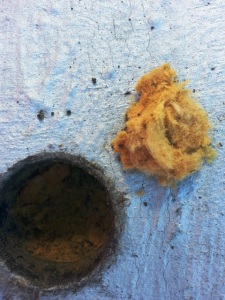
The substrate is dry but a dishonest roofer told the owner it had to come off and that he had included it in his bid . He didn’t do a tear-off but saying he was going to made it look like he was including more work for the same cost as the other roofers.
The other not altogether uncommon scenario is where a tear-off that should be done is not included in the dishonest roofer’s price so his bid is substantially lower than roofers who will be doing the required tear-off. While the much lower price is very appealing to the building owner (“he’s the only roofer that’s not raking me over the coals”), the owner has no idea for the time being that because the required tear-off was not done, the cost per year of the roof will be far more than the roofers who would have done the required tear-off because of the shortened life of the new roof. Worse yet, because most new roofing systems are unvented and trap the water under a waterproof layer, steel and wooden roof decks in particular are subject to concealed structural damage.
In both cases, the building owner is being cheated and often will not know it for many years to come as owners are rarely on the roof for any length of time while the work is being done. A simple way for building owners to know whether their roof needs a partial or complete tear-off is to ask each of the roofers bidding on the job to include photos of the core samples and/or the samples themselves with their bid. As far as making sure any required tear-off is actually being done, choosing a trustworthy roofing contractor to do the work is the best place to start, but making each bidder aware that several random core samples will be taken after the new roof is completed is the best guarantee.
Manchester Roofing Systems is based in West Caln, PA. Our location affords us both low-overhead & good highway access to a large portion of the mid-Atlantic region. Our overall service area is a 100 mile radius including from North Jersey to Washington and from Harrisburg to the Jersey Shore. Our primary service area is:
| Counties | Areas |
| Berks | Kutztown · Morgantown · Reading |
| Bucks | Bensalem · Doylestown · Jenkintown · Langhorne · Perkasie · Quakertown · Warminster |
| Burlington | Cinnaminson · Mt. Holly · Willingboro |
| Camden | Cherry Hill · Mt. Ephraim · Pennsauken · Voorhees |
| Chester | Coatesville · Downingtown · Exton · Kennett Square · Malvern · Phoenixville · West Chester |
| Delaware | Aston · Broomall · Concordville · Darby · Edgemont · Media · Newtown Square · Ridley · Springfield · Wayne |
| Gloucester | Deptford · Glassboro · Swedesboro |
| Lehigh | Allentown · Bethlehem |
| Montgomery | Abington · Ambler · Collegeville · Ft. Washington · Horsham · King of Prussia · Lansdale · Limerick · Norristown · Plymouth Meeting · Pottstown · Willow Grove |
| New Castle | Hockessin · Newark · New Castle · Wilmington |
When choosing a commercial flat roofing system in Pennsylvania, Delaware, New Jersey or beyond, it’s essential to consider factors such as the climate, local building codes, the building’s purpose, and maintenance requirements. Consulting with a roofing professional or contractor experienced in flat roofing systems can help you make an informed decision based on your specific needs and circumstances. Additionally, always ensure that the chosen roofing system complies with local building codes and regulations.
Manchester Roofing Systems can install any commercial flat roofing system, but we recommend and specialize in Duro-Last®, The World’s Best Roof© roofing for a number of significant reasons.


